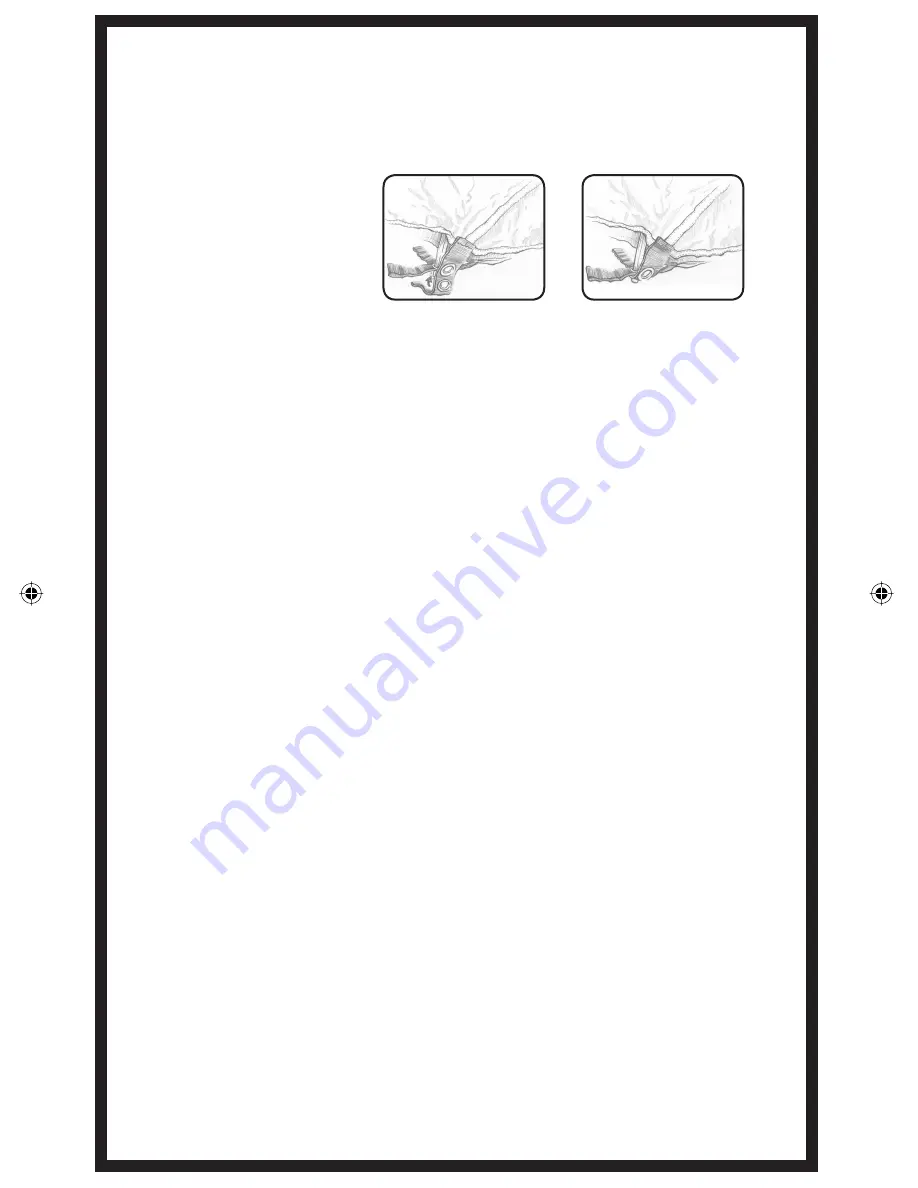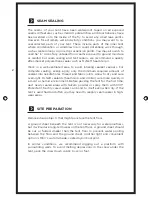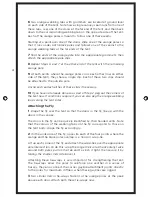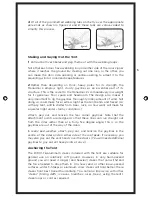
5
4
Fit all of the grommetted webbing tabs on the fl y over the appropriate
pole ends as shown in fi gures A and B; these tabs are colour-coded to
simplify this process.
Staking and Guying Out the Tent
1
Pull out both vestibules and peg them out with the webbing loops.
Note that each door has a webbing loop on either side of the door zipper
where it reaches the ground. By staking out one loop or the other, you
can make the door side-opening or centre-opening to adapt it to the
prevailing wind or local landscape features.
2
Rather than depending on thick, heavy poles for its strength, the
Monadnock employs light, sturdy guylines as an essential part of its
structure. This is the secret to the Monadnock’s comparatively low weight
for its generous fl oor space and headroom. The design also makes it
very important to rig the guylines thoroughly in any amount of wind. Not
doing so could make for a restless night as the tent bends and fl exes! (As
with any tent, a little shelter from trees, rock, or snow walls will make for
a quieter night under stormy conditions.)
Attach, peg out, and tension the four corner guylines.
Note that the
attachment points are designed so that these lines can run straight out
from the sides rather than at a forty-fi ve degree angle; this is so the
guylines are out of the way of the doors.
In really bad weather, attach, peg out, and tension the guylines in the
centre of the sides and on either side of the roof peak. If necessary, you
may also guy out the vent hoods over the doors. (You will need additional
guylines to guy out all these points at once.)
Anchoring the Tent
The #7001-T6 aluminum stakes included with the tent are suitable for
general use on relatively soft ground. However, in very hard-packed
ground you will need stronger (and heavier!) stakes that can withstand
the force needed to drive them in. On snow, sand, or other loose-packed
surfaces, wider T-Stakes or aluminum snow stakes will hold better; these
stakes hold best buried horizontally. You can also improvise with other
“stakes” (hiking staffs, ice axes, branches, rocks, trees), using the tent’s
stake loops or cord as required.
fi gure A
fi gure B
Monadnok eng.indd 5
Monadnok eng.indd 5
3/1/05 2:31:14 PM
3/1/05 2:31:14 PM


























